Technology is constantly evolving, and virtual reality (VR) and augmented reality (AR) are leading the way in making the world more accessible for people with disabilities. These innovations are not just for gaming or entertainment—they are transforming education, healthcare, workplace environments, and daily life. By creating immersive, adaptable experiences, VR and AR are helping individuals with disabilities overcome challenges, gain independence, and engage with the world in new ways.
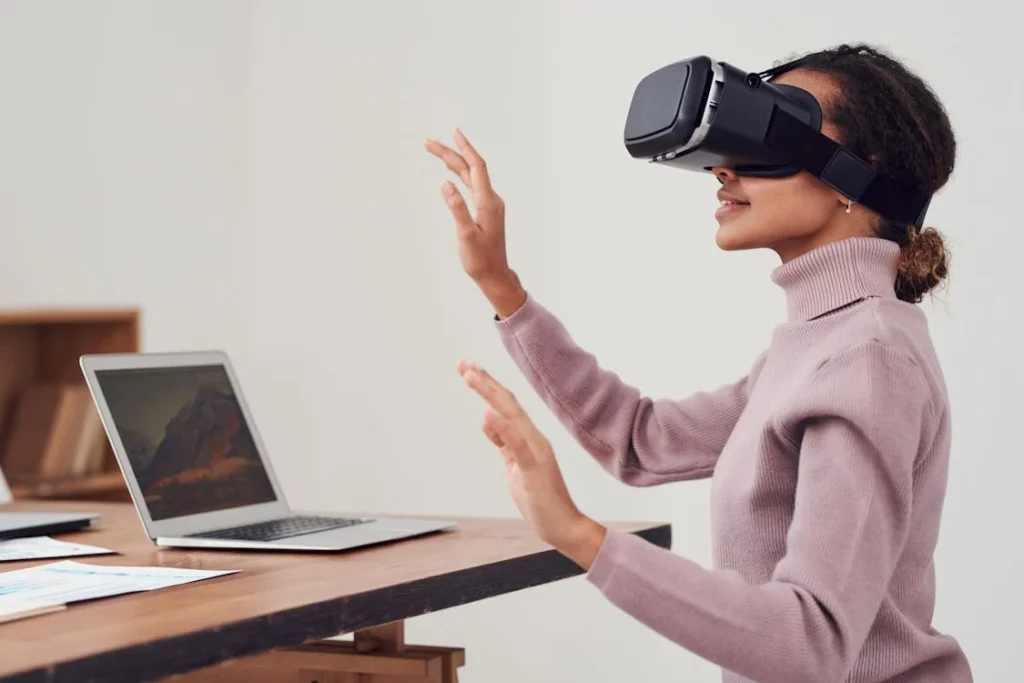
How Virtual Reality (VR) Is Transforming Accessibility
Virtual reality (VR) creates fully immersive digital environments that allow users to interact with simulated spaces as if they were physically present.
For individuals with disabilities, VR is opening new doors in education, therapy, and daily life, helping them overcome limitations and experience the world in ways that were once impossible.
Enhancing Mobility and Independence
For people with mobility impairments, VR provides a way to explore places they may not physically be able to visit.
Whether it’s touring a museum, walking through a historical site, or even practicing navigation in a simulated city, VR helps users experience spaces without physical barriers.
This is particularly beneficial for individuals who use wheelchairs or prosthetic limbs, as it allows them to prepare for real-world interactions in a controlled environment.
In rehabilitation, VR is being used to help individuals regain movement and coordination after injuries or surgeries. Many rehabilitation centers now offer VR-based therapy sessions where patients perform guided exercises in a virtual environment.
These sessions make physical therapy more engaging and effective by incorporating interactive tasks and real-time feedback.
Patients recovering from strokes, spinal cord injuries, or limb amputations can practice movements in VR before attempting them in real life, building confidence and muscle memory.
Making Education More Accessible
For students with disabilities, VR is transforming the way they learn. Traditional classrooms can sometimes present challenges, especially for those with mobility impairments, sensory sensitivities, or learning difficulties.
With VR, students can participate in interactive lessons from anywhere, engaging with subjects in a way that suits their needs.
A student who struggles with mobility can take part in virtual field trips to locations around the world, from ancient ruins to outer space.
Those with visual impairments can use VR systems that provide audio descriptions and tactile feedback, creating a richer learning experience.
Additionally, students with autism or social anxiety can use VR to practice social interactions, helping them develop confidence in a safe and controlled setting.
Revolutionizing Job Training and Employment
VR is also creating new opportunities in the workplace. Job training programs are using VR to teach individuals with disabilities new skills in a realistic but low-risk setting.
This is especially useful for jobs that require physical movement or complex tasks, as VR allows users to practice without fear of injury or failure.
For example, individuals with prosthetic limbs can use VR to learn how to operate machinery, practice customer service interactions, or even develop new career skills.
By providing hands-on experience in a virtual world, VR ensures that people with disabilities can gain employment and perform their jobs with confidence.

How Augmented Reality (AR) Is Enhancing Accessibility
While virtual reality (VR) creates fully immersive digital worlds, augmented reality (AR) enhances the real world by overlaying digital information onto physical spaces.
This technology is making everyday tasks easier for individuals with disabilities, improving communication, navigation, and independence.
Unlike VR, which requires users to be completely immersed in a virtual environment, AR allows people to interact with the real world while receiving digital assistance in real time.
Improving Navigation for People with Visual Impairments
One of the most significant ways AR is improving accessibility is by assisting individuals with visual impairments.
Navigation in unfamiliar places can be challenging for people who are blind or have low vision, but AR-powered apps are changing this.
Using a smartphone or AR glasses, users can receive audio descriptions, real-time object recognition, and step-by-step navigation instructions to help them move through complex environments safely.
For example, AR-based apps can identify street signs, recognize obstacles, and provide spoken directions, allowing individuals with visual impairments to navigate cities independently.
Some apps even use AI-driven object recognition to read menus, identify products in stores, or detect traffic signals, making daily life much more manageable.
Enhancing Communication for People with Hearing Impairments
For individuals who are deaf or hard of hearing, AR is improving communication by offering real-time speech-to-text conversion and visual cues.
AR glasses can display subtitles directly in the user’s field of view during conversations, helping them understand spoken words without relying on lip reading. This is especially useful in noisy environments where traditional hearing aids may struggle to pick up speech clearly.
In educational and professional settings, AR is being used to provide live captions for lectures, meetings, and public speeches. This ensures that individuals with hearing impairments can fully engage in discussions without missing important information.
Some AR applications even translate spoken language into sign language, bridging communication gaps in real time.
Supporting Cognitive and Learning Disabilities
Individuals with cognitive or learning disabilities often benefit from visual and interactive learning experiences, and AR provides just that.
AR-based tools help individuals understand complex concepts, follow instructions, and stay organized by presenting information in an engaging, step-by-step format.
For example, AR apps can assist individuals with dyslexia by converting written text into easier-to-read fonts or spoken words.
Those with attention disorders can use AR-based reminders that highlight important tasks, while individuals with autism can practice social interactions with digital overlays that guide them through conversations.
Transforming Physical Therapy and Prosthetic Training
Just as VR is improving rehabilitation, AR is playing a crucial role in physical therapy and prosthetic training. AR-based systems allow patients to see real-time feedback on their movements, ensuring they are performing exercises correctly.
This helps people recovering from injuries or surgeries regain strength and coordination more effectively.
For prosthetic users, AR can assist with learning how to use advanced prosthetic limbs, such as robotic hands.
Individuals adjusting to new prosthetics can see visual guides projected onto their real-world environment, showing them how to make precise movements or grip objects correctly.
At Robobionics, we develop prosthetic solutions like Grippy™, a bionic hand that improves dexterity and function. With AR integration, users can learn to operate prosthetics more naturally, enhancing their confidence and independence.
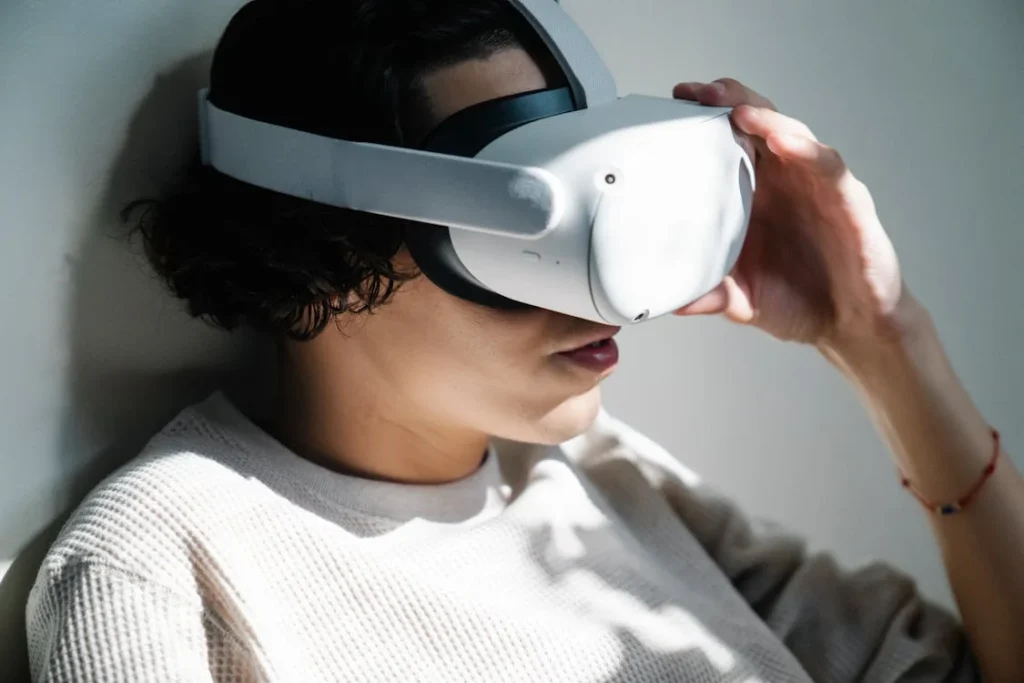
The Future of VR and AR in Accessibility
As technology continues to evolve, VR and AR are expected to play an even greater role in making the world more accessible.
Researchers, developers, and disability advocates are working together to create more advanced solutions that improve mobility, communication, and independence for individuals with disabilities.
With AI-powered enhancements, wearable devices, and new accessibility-focused applications, the future of VR and AR is incredibly promising.
AI-Driven Personal Assistants for Accessibility
One of the most exciting developments in AR and VR is the integration of artificial intelligence (AI) to create smart personal assistants that cater to individual needs.
These AI-driven systems will be able to analyze real-world environments and provide real-time guidance based on a person’s specific disability.
For example, a visually impaired person wearing AR glasses could have an AI-powered assistant that describes surroundings, reads text aloud, and provides directions using natural voice commands.
Similarly, individuals with mobility impairments could use AI-powered VR systems to simulate different environments and prepare for real-world challenges in a safe and controlled space.
The Rise of Wearable AR Devices
While many AR applications currently rely on smartphones and tablets, the future lies in wearable AR devices such as smart glasses and headsets that provide hands-free accessibility solutions.
These wearables will offer real-time text captions, facial recognition to assist with identifying people, and gesture-based controls for individuals with limited mobility.
For individuals who are deaf or hard of hearing, smart AR glasses could provide instant subtitles for conversations, ensuring seamless communication in any environment.
Likewise, those with cognitive disabilities could receive real-time visual prompts and reminders to help with daily activities, from following a schedule to remembering important instructions.
Virtual Reality for Mental Health and Social Inclusion
Beyond physical accessibility, VR is also emerging as a powerful tool for mental health support and social inclusion.
Many individuals with disabilities face social isolation, anxiety, or depression due to mobility challenges or communication barriers.
VR provides a safe and controlled space for people to practice social interactions, join virtual communities, and experience new activities without physical limitations.
For individuals with autism, VR simulations can be used to practice social skills, workplace interactions, and real-world scenarios, helping them build confidence in a comfortable setting.
Similarly, VR-based meditation and relaxation experiences are being developed to assist individuals with anxiety or sensory processing disorders, offering calming environments tailored to their specific needs.
AR and VR in Smart Cities and Public Spaces
The integration of AR and VR in urban planning and public spaces is another step toward greater accessibility.
In the future, AR-based navigation systems will provide real-time assistance for individuals with disabilities in crowded areas, train stations, airports, and shopping centers.
These systems will offer personalized guidance, directing users to accessible entrances, restrooms, and transportation options without needing external help.
Public services are also expected to benefit from VR and AR training programs. Emergency responders, healthcare professionals, and customer service workers will be able to train in virtual simulations that teach them how to assist individuals with disabilities effectively.
This will lead to more inclusive and accommodating public spaces, ensuring that accessibility is a priority in every aspect of urban life.
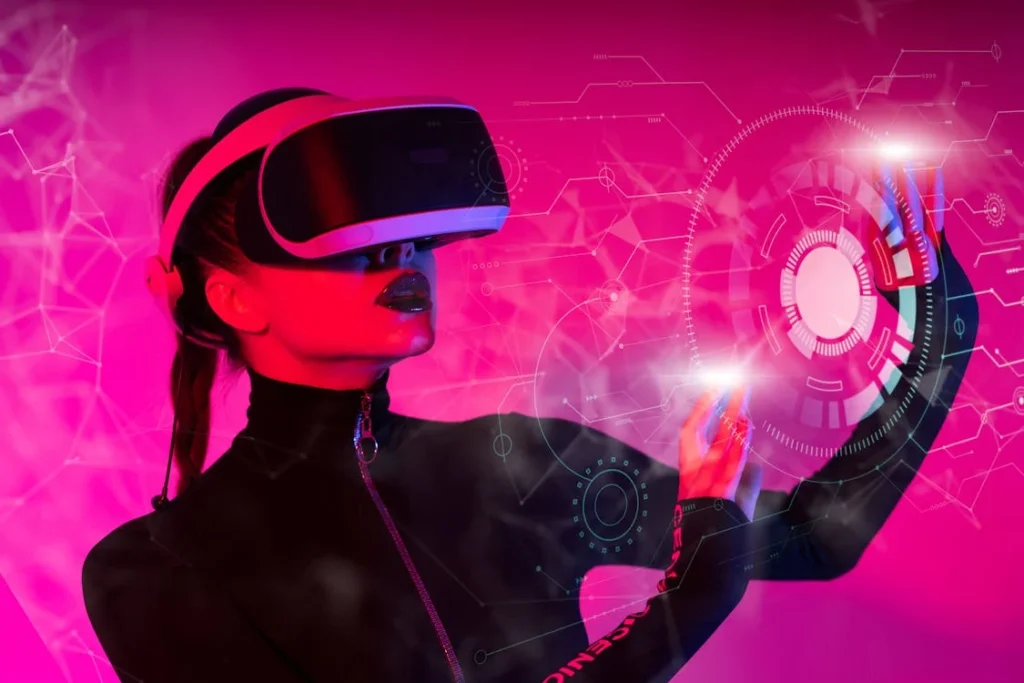
The Role of VR and AR in Workplace Accessibility
As more businesses recognize the importance of inclusivity, VR and AR are becoming essential tools for improving workplace accessibility.
These technologies are not only helping individuals with disabilities gain employment but also ensuring that workplaces are designed to accommodate diverse needs.
By reducing barriers in job training, office navigation, and remote work, VR and AR are making workplaces more equitable for all employees.
Virtual Reality for Job Training and Skill Development
For individuals with disabilities, traditional job training can sometimes present challenges, particularly in environments that require hands-on learning.
VR is changing this by providing immersive training simulations that allow employees to develop skills in a safe, controlled, and adaptable environment.
For example, individuals with mobility impairments can use VR to practice job tasks without physically moving to different locations.
A person training for a customer service role can interact with virtual customers in a simulated store or call center, gaining experience and confidence before working in a real-world setting.
Similarly, individuals who use prosthetic limbs can practice using specialized tools and equipment in a VR environment before applying those skills in their actual workplace.
Employers are also using VR to simulate workplace scenarios, helping employees with cognitive disabilities or anxiety disorders become familiar with their work environment before they start their job.
This reduces stress and improves workplace readiness, ensuring that every employee feels comfortable and prepared.
AR for Workplace Navigation and Accessibility
For employees with visual impairments or mobility challenges, AR is making workplaces easier to navigate.
Many companies are now integrating AR-based navigation systems into their office layouts, allowing employees to receive step-by-step visual or audio instructions on how to move between different departments, conference rooms, or restrooms.
In open-plan offices, AR can also be used to provide real-time desk assignment assistance, personalized work reminders, or voice-activated meeting scheduling.
Employees with hearing impairments can benefit from AR glasses that display real-time captions during meetings, ensuring full participation in discussions without relying on lip-reading or interpreters.
Supporting Remote Work and Virtual Collaboration
The rise of remote work has been a game-changer for many individuals with disabilities, allowing them to work from home while avoiding transportation and physical accessibility challenges.
VR and AR are taking remote work to the next level by creating immersive virtual offices where employees can interact as if they were physically present.
Using VR headsets, employees can collaborate in virtual workspaces, attend meetings in digital conference rooms, and engage with colleagues using avatars.
This provides a more interactive alternative to traditional video calls, allowing employees to gesture, write on virtual whiteboards, and even present ideas using 3D models.
For individuals with disabilities, customizable VR workspaces can be adapted to their needs. Adjustable display settings, voice-command controls, and personalized accessibility features ensure that employees can work comfortably without facing physical or sensory barriers.
As VR and AR continue to be adopted in workplaces, businesses will become more inclusive, ensuring that employees of all abilities have equal opportunities to succeed.
These technologies are not just enhancing accessibility—they are redefining what a truly inclusive workplace looks like.
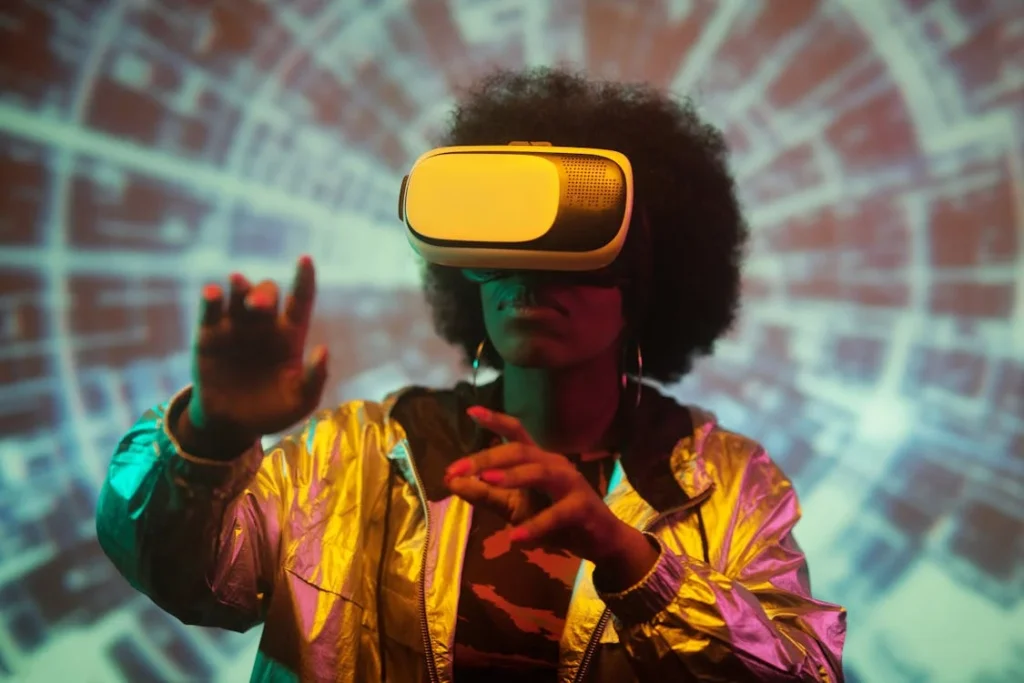
VR and AR in Healthcare and Rehabilitation
Healthcare is one of the most promising fields where virtual reality (VR) and augmented reality (AR) are improving accessibility.
These technologies are helping patients with disabilities receive better treatment, regain mobility, and manage chronic conditions more effectively.
From rehabilitation therapy to prosthetic training, VR and AR are reshaping the way healthcare is delivered, making it more personalized, engaging, and accessible.
Virtual Reality for Rehabilitation and Physical Therapy
For individuals recovering from injuries, strokes, or surgeries, VR-based rehabilitation is offering a new way to regain strength and coordination.
Traditional physical therapy can sometimes feel repetitive and discouraging, but VR turns it into an interactive and engaging experience.
Patients can perform rehabilitation exercises in virtual environments that simulate real-world activities, such as walking through a park, reaching for objects, or climbing stairs.
These exercises help improve muscle coordination, balance, and confidence, all while keeping patients motivated through gamified therapy sessions.
For individuals with spinal cord injuries or neurological conditions like Parkinson’s disease, VR rehabilitation programs can help them practice controlled movements and improve motor function in a safe setting.
Since VR can track progress in real-time, therapists can customize exercises based on a patient’s specific needs, ensuring optimal recovery.
AR for Prosthetic Training and Mobility Assistance
For individuals using prosthetic limbs, learning how to control and adapt to a new device can take time. AR is making this process easier by providing real-time visual guides that show users how to move their prosthetic limbs effectively.
At Robobionics, we are committed to enhancing prosthetic technology, including our advanced Grippy™ bionic hand.
With AR integration, prosthetic users can receive on-screen guidance and feedback while performing everyday tasks like grasping objects, typing, or even playing musical instruments.
This allows them to fine-tune their movements and improve functionality in a way that feels natural.
Beyond prosthetics, AR is also assisting individuals with mobility impairments by providing real-time navigation assistance in hospitals, clinics, and public spaces.
Using AR glasses or smartphone apps, users can receive step-by-step visual directions to locate elevators, accessible restrooms, or medical offices without needing external assistance.
Mental Health Support and Therapy
VR is also playing an important role in mental health therapy, offering immersive treatments for individuals with anxiety, PTSD, or phobias.
Many mental health professionals are using VR-based exposure therapy, where patients can gradually face their fears in a controlled virtual environment while receiving guidance from a therapist.
For individuals with autism, VR is being used to develop social skills by simulating real-world interactions, such as ordering at a restaurant, interviewing for a job, or engaging in conversations.
These virtual experiences allow individuals to practice social interactions without the pressure of real-life situations, helping them build confidence over time.
The Future of VR and AR in Healthcare
As VR and AR technology continues to improve, healthcare accessibility will become even more advanced. Future innovations may include AI-powered VR therapy programs, smart prosthetics with AR-driven feedback, and fully immersive medical training simulations.
These advancements will not only benefit individuals with disabilities but will also create a more inclusive, efficient, and patient-centered healthcare system.
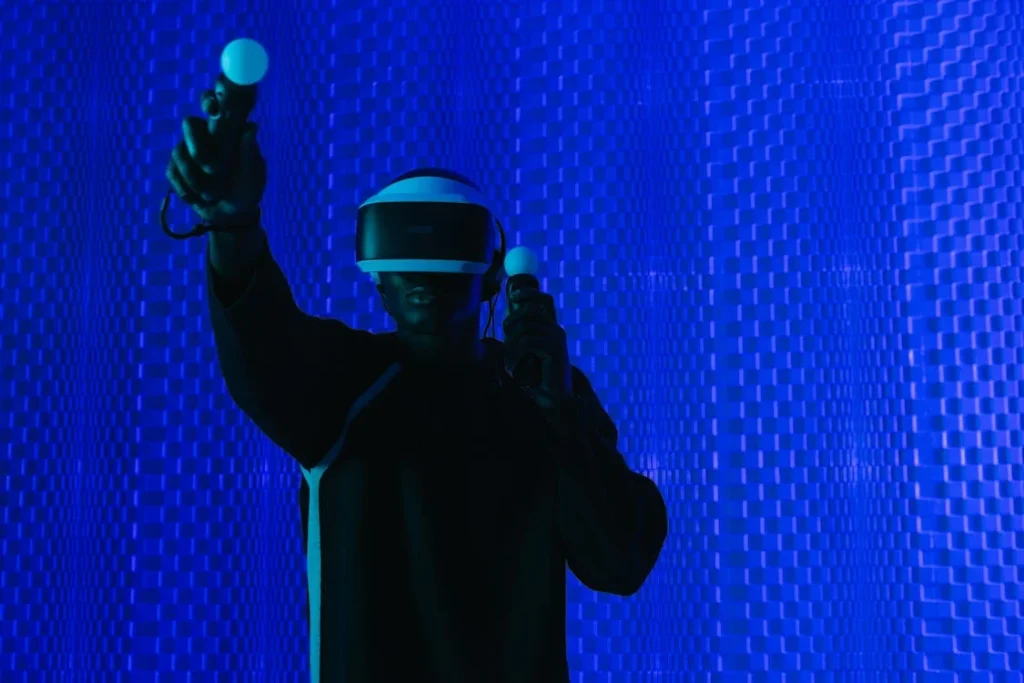
The Role of VR and AR in Daily Life and Independent Living
Beyond healthcare, education, and the workplace, VR and AR are making daily life more accessible for individuals with disabilities.
These technologies are helping people complete everyday tasks, connect with their communities, and enjoy greater independence.
From smart home integration to personal mobility assistance, VR and AR are reshaping the way people with disabilities interact with the world around them.
AR-Powered Smart Homes for Greater Independence
Smart home technology is becoming a key part of independent living, and AR is enhancing it further.
With AR-powered smart home systems, individuals with disabilities can control lighting, appliances, and security features using gesture-based controls, voice commands, or visual overlays on their smartphones or AR glasses.
For example, a person with limited mobility can point at a lightbulb while wearing AR glasses, and the system will recognize the motion and turn the light on or off.
Similarly, individuals who are blind or have low vision can use AI-enhanced AR devices that describe their surroundings, helping them navigate their homes safely.
AR for Shopping and Everyday Tasks
For individuals with visual impairments, grocery shopping and other errands can be challenging. AR is solving this by scanning products and reading labels aloud or highlighting essential items in a digital overlay.
AR-powered shopping assistants help users identify products, compare prices, and even locate specific sections of a store without requiring assistance.
For individuals with mobility impairments, AR applications provide real-time data about the availability of accessible entrances, ramps, and elevators in public spaces.
This eliminates the need for unnecessary detours or last-minute accessibility adjustments, making everyday tasks more convenient and stress-free.
VR for Social Interaction and Entertainment
Social isolation is a common challenge for individuals with disabilities, but VR is providing new ways to connect with friends, attend events, and experience entertainment from the comfort of home.
Virtual reality social platforms allow individuals to meet friends, explore digital worlds, and attend concerts or gatherings using customizable avatars.
VR chatrooms and online communities provide a space for people to interact without physical barriers, reducing feelings of isolation and promoting social inclusion.
VR is also changing the way people experience travel. For individuals who are unable to visit certain destinations due to mobility challenges, VR provides fully immersive travel experiences.
From exploring ancient cities to walking through national parks, users can experience new places without leaving their homes.
Future Innovations in AR and VR for Independent Living
The future of AR and VR in daily life is focused on even smarter and more personalized accessibility solutions.
AI-driven personal assistants in AR glasses will provide users with real-time information on transportation schedules, smart home controls, and even emergency alerts.
VR therapy programs will become more advanced, offering customized relaxation and mindfulness experiences for individuals with anxiety or sensory sensitivities.
As AR and VR technology continues to evolve, these tools will play a crucial role in creating a world where individuals with disabilities can live, work, and socialize without barriers.
Conclusion
Virtual reality (VR) and augmented reality (AR) are revolutionizing accessibility, breaking down barriers in education, healthcare, workplaces, and daily life. These technologies are not just futuristic innovations—they are real, practical tools that empower individuals with disabilities to navigate the world with greater ease and independence. From VR-based rehabilitation and training simulations to AR-powered navigation and smart home integration, these advancements are reshaping how people interact with their surroundings.
As technology continues to evolve, VR and AR will become even more adaptive and personalized, ensuring that accessibility is not an afterthought but a fundamental design principle. By investing in these technologies, society moves closer to a future where every individual, regardless of ability, can experience life without limitations.
At Robobionics, we are dedicated to enhancing accessibility through advanced assistive solutions like Grippy™, our innovative bionic hand. If you’re looking for cutting-edge prosthetic technology that improves mobility and independence, contact us today and explore the future of accessibility.



